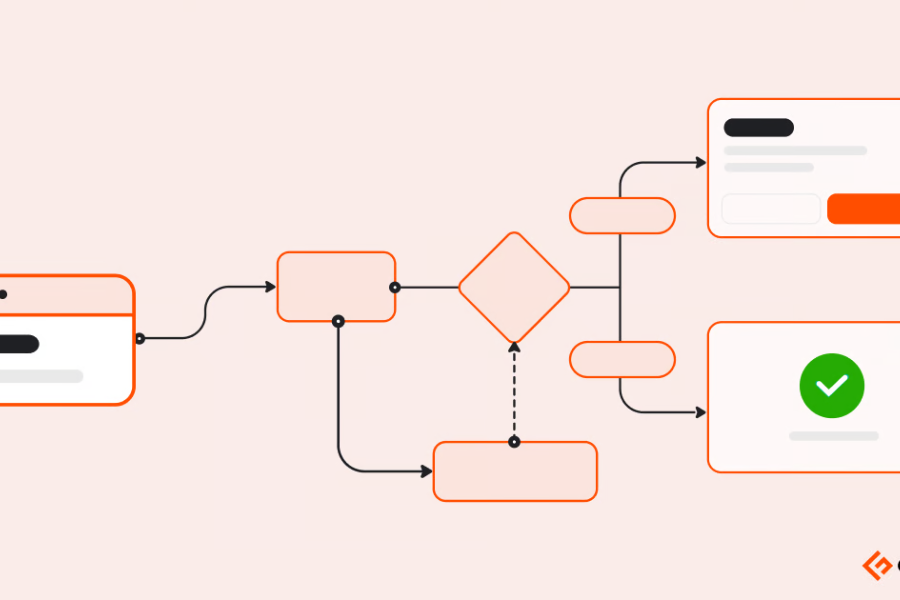One way businesses can achieve these goals is through workflow automation. By leveraging workflow automation software, organizations can streamline processes, reduce manual errors, and free up valuable time for their teams. In this blog, we will explore the concept of workflow automation, its benefits, and how to effectively implement workflow automation software to put your work on autopilot effortlessly.
Understanding Workflow Automation
Workflow automation refers to the use of technology to automate complex business processes. This involves creating a series of automated actions that move tasks through different workflow stages. From data entry and approval processes to task assignments and notifications, workflow automation software can handle it all, ensuring that tasks are completed efficiently and consistently.
The Benefits of Workflow Automation
Increased Efficiency
One of the most significant benefits of workflow automation is the increase in efficiency. Manual processes often involve repetitive tasks that can be time-consuming and prone to errors. Workflow automation software eliminates these repetitive tasks, allowing employees to focus on more strategic activities. By automating routine tasks, businesses can significantly reduce the time it takes to complete workflows, leading to faster turnaround times and improved productivity.
Reduced Errors
Manual processes are susceptible to human error, which can lead to costly mistakes. Workflow automation software minimizes the risk of errors by ensuring that tasks are completed accurately and consistently. Automated workflows follow predefined rules and logic, reducing the chances of oversight or miscommunication. This level of precision is particularly valuable in industries where accuracy is critical, such as finance, healthcare, and legal services.
Improved Collaboration
Workflow automation fosters better collaboration among team members. With automated workflows, tasks are assigned automatically, and notifications are sent to relevant stakeholders, ensuring everyone is on the same page. This transparency enhances communication and coordination, leading to smoother and more efficient workflows. Team members can easily track the progress of tasks, identify bottlenecks, and address issues promptly.
Enhanced Scalability
As businesses grow, their processes become more complex. Workflow automation software provides the scalability needed to handle increased workloads. Automated workflows can be easily adjusted and scaled to accommodate changing business needs. This flexibility ensures that businesses can continue to operate efficiently, even as they expand and take on new projects.
Better Compliance
In industries with strict regulatory requirements, compliance is crucial. Workflow automation software helps businesses adhere to compliance standards by ensuring that processes are followed consistently and accurately. Automated workflows can be designed to include compliance checks and documentation, reducing the risk of non-compliance and potential penalties.
Implementing Workflow Automation Software
Identify Processes for Automation
The first step in implementing workflow automation software is to identify the processes that would benefit most from automation. Look for repetitive, time-consuming tasks that require manual intervention. Common candidates for automation include data entry, invoice processing, approval workflows, and customer service tasks. By targeting these processes, you can achieve the greatest impact on efficiency and productivity.
Choose the Right Workflow Automation Software
Selecting the right workflow automation software is critical to the success of your automation efforts. Look for software that offers a user-friendly interface, robust features, and scalability. Consider your specific business needs and ensure that the software can integrate seamlessly with your existing systems. Popular workflow automation software options include Zapier, Microsoft Power Automate, and Nintex.
Map Out Your Workflows
Before automating a process, it’s essential to map out the workflow in detail. This involves documenting each step of the process, including decision points, approvals, and notifications. Mapping out your workflows will help you identify potential bottlenecks and areas for improvement. Use flowcharts or workflow diagrams to visualize the process and ensure that all stakeholders have a clear understanding of how the workflow will function.
Configure and Test Automated Workflows
Once you have mapped out your workflows, it’s time to configure them in your chosen workflow automation software. This involves setting up triggers, actions, and conditions that will drive the automated process. Take the time to thoroughly test the automated workflows to ensure they function as expected. Testing is crucial to identify and address any issues before rolling out the automation to the entire organization.
Train Your Team
Introducing workflow automation software to your team requires proper training and support. Provide comprehensive training sessions to ensure all users understand how to use the software and navigate the automated workflows. Encourage team members to ask questions and provide feedback. Ongoing support and training will help your team adapt to the new system and maximize its benefits.
Monitor and Optimize
Workflow automation is not a set-it-and-forget-it solution. Regularly monitor your automated workflows’ performance to ensure they deliver the desired results. Use analytics and reporting features to track key metrics such as task completion times, error rates, and overall efficiency. Based on the data, identify opportunities for further optimization and make necessary adjustments to improve the performance of your workflows.
Conclusion
Workflow automation software has the power to transform the way businesses operate, driving efficiency, reducing errors, and enhancing collaboration. By putting your work on autopilot, you can free up valuable time for your team to focus on strategic initiatives and innovation. The key to successful workflow automation lies in selecting the right software, mapping out your workflows, and continuously monitoring and optimizing the automated processes. Embrace workflow automation today and take the first step towards a more efficient and productive future.
Keep an eye for more news & updates on MyStoriesList.Com!
